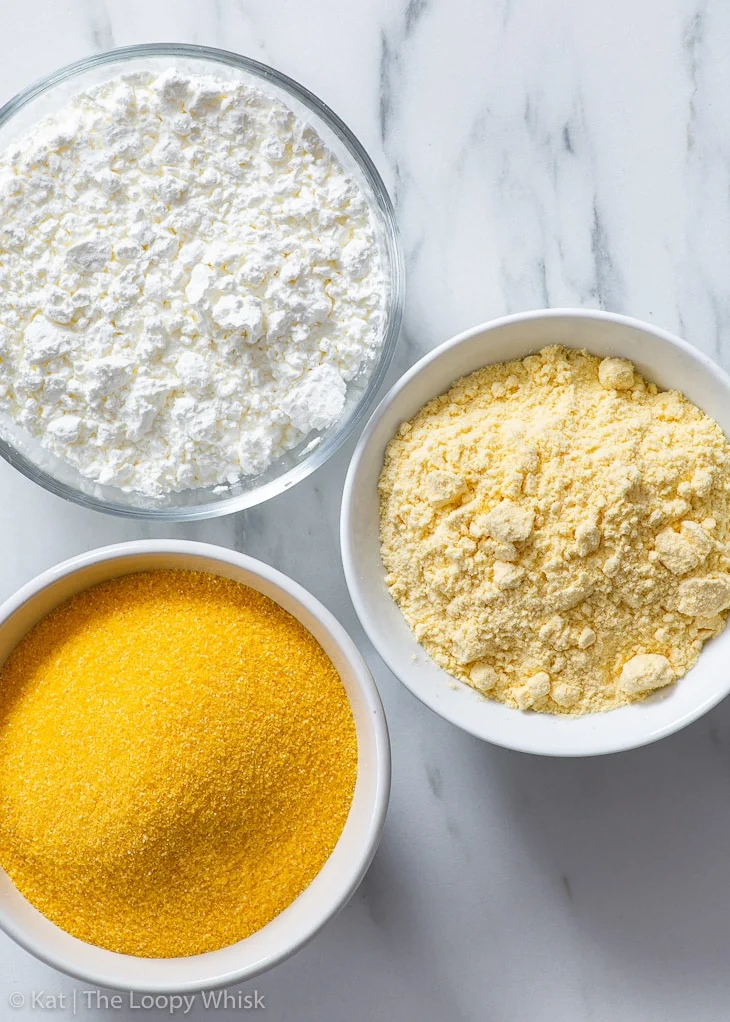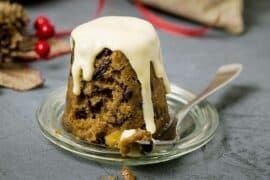Is Cornstarch the Same as Cornflour? A Comprehensive Guide for Parents
Welcome, savvy parents, to the ultimate showdown in the kitchen: Cornstarch vs. Cornflour! If you’ve ever found yourself staring at these two powdery substances in your pantry, wondering if they’re interchangeable, you’re in the right place. In this friendly guide, we’ll sift through the facts, sprinkle in some tips, and help you come out on top in your culinary adventures.
Understanding the Basics: What’s in a Name?
So, what’s the deal? Is cornstarch the same as cornflour? The answer might be a little more complicated than a simple yes or no, and quite frankly, it depends on where you are in the world! Don’t worry, though; we’re here to clear up any confusion.
In the United States, cornstarch is a fine, powdery starch that’s extracted from corn kernels. It’s commonly used as a thickening agent for sauces, gravies, and soups. It’s also a staple in many baking recipes and can create a tender crumb in cakes and cookies.
Cornflour, on the other hand, refers to a finely ground version of whole corn kernels. It’s similar to cornmeal, only more finely milled. Cornflour can be used in a similar way to other flours, making it a wonderful addition to bread, muffins, and even as a breading for fried foods.
However, cross the pond to the UK, and the names switcheroo! That’s right, in British English, “cornflour” actually refers to the same thing Americans know as cornstarch. And to add to the fun, what Americans call “cornmeal,” Brits refer to as “cornflour.” Confused yet? Stick with us!
Key Differences Between Cornstarch and Cornflour
- Texture and Processing: Cornstarch is a refined product—it’s the endosperm of the corn kernel, separated, dried, and ground to a fine, silky powder that’s all starch, all the time. Cornflour, however, contains the whole kernel, making it coarser in texture and richer in nutrients.
- Usage in Cooking: Reaching for cornstarch? You’re likely trying to thicken a sauce. Cornflour, on the other hand, is your go-to for adding depth and body to your breads or dredging your proteins and veggies for a delightful crispiness upon frying.
- Nutritional Content: As cornstarch is pretty much pure starch, it’s high in carbohydrates and calories, but low on vitamins and fiber. Cornflour has more protein, fiber, and vitamins since it’s ground from the whole kernel.
Culinary Tips for Parents Navigating Cornstarch and Cornflour
Let’s be real—when you’re juggling making lunchboxes, preparing family dinners, and trying to maintain some semblance of order in your kitchen, understanding these differences can save you from a culinary catastrophe. Here are some handy tips:
- Always Have Both on Hand: Since cornstarch and cornflour serve different purposes, consider them both essential players in your pantry lineup.
- Thicken Like a Pro: To thicken with cornstarch, remember to create a “slurry” by mixing it with a little cold water before adding it to your hot liquid. This prevents clumping and ensures smooth sailing… or, in this case, smooth sauces.
- Go Gluten-Free: Are you dealing with gluten sensitivities? Both cornstarch and cornflour are naturally gluten-free, making them great alternatives to wheat flour for your family’s dietary needs.
Now that we’ve started to unravel this culinary mystery, are you ready to dive deeper? Stay tuned as we explore the many ways to use both cornstarch and cornflour in your family-friendly recipes, delve into international terminology to avoid any mix-ups, and offer up some scrumptious, kid-approved treats that will have everyone cheering for more!
Remember, whether you’re thickening a gravy to pair with your famous roast or whipping up a batch of nutty, wholesome cornbread, the right choice between cornstarch and cornflour can make all the difference. So tie on those aprons and prepare to become the corn connoisseur of the kitchen!

5 Things Parents Should Know When Preparing Cornstarch and Cornflour
As wonderful as it is to have the answers to the cornstarch and cornflour conundrum, there’s more to consider when preparing food for your bustling brood. Here are five things every parent should keep in mind:
- Consider Cooking Temperatures: Cornstarch thickened sauces tend to breakdown if cooked at too high of a temperature or for too long. When thickening with cornstarch, add it towards the end of your cooking time and watch for that first bubble of a boil—that’s your cue to turn the heat down and let it simmer gently to avoid any thinning.
- Avoid Freezing Cornstarch-Thickened Dishes: Planning to freeze that delicious stew for next week? If it’s been thickened with cornstarch, you might want to think twice. Cornstarch can lose its thickening mojo after being frozen and thawed, leading to a watery disappointment. For freeze-ahead meals, consider using cornflour or an alternative thickener.
- Pair with Acid Wisely: Acidic ingredients can affect cornstarch’s thickening abilities, so if you’re making a lemony sauce or a fruit pie with a tart kick, you may need a bit more cornstarch than you originally thought. Just add slowly and keep stirring until you reach the desired consistency.
- Substitution Savvy: In a pinch and don’t have the cornstarch you need? For every tablespoon of cornstarch required in a recipe, you can substitute with two tablespoons of all-purpose flour. Keep in mind, though, the result may not be quite as silky smooth as with cornstarch.
- Mix It Up: Want to teach your little ones about texture and flavors? Use cornflour to create homemade playdough or to concoct an array of coatings and batters for participating in a family cook-off. It’s a fantastic way to bond and infuse learning with fun.
Knowing these tips and tricks can turn your kitchen into a magical place of discovery and delight. Engage your children by inviting them to help measure, mix, and learn about the properties of these kitchen staples. Who knows? Maybe there’s a future chef in the midst! Now how’s that for a sprinkle of joy in the everyday hustle and bustle?
International Cuisine and Corn Products
As you’ve probably gathered by now, cornstarch and cornflour are versatile ingredients with global appeal. From the thickened soups of American comfort food to the delightfully crispy coatings in Asian cuisine, and the fluffy texture of British Victoria sponge cakes, these corn products transcend borders and cuisines.
Not to mention, in Latin American cooking, cornflour—particularly the precooked kind known as masa harina—is the foundation for arepas, tortillas, and tamales. It goes to show that having a grasp on the diversity and use of corn products can open up a world of culinary exploration for you and your children.
So, whether you’re dining on enchiladas on a Tuesday night or dunking spring rolls in a homemade dip at your weekend family gathering, the knowledge of how to use cornstarch and cornflour can enrich your family’s dining experience. Embrace the global kitchen right from your own home!
Delectable Kid-Friendly Recipes with Cornstarch and Cornflour
Get ready to roll up those sleeves and preheat the oven, because we’ve got some kid-friendly recipes that are sure to impress and satisfy. Imagine a cornstarch-based chocolate pudding so creamy and rich it’ll have the little ones (and you) scraping the bowl for that elusive last spoonful.
Or maybe you’ll go the route of fluffy, tender pancakes made with cornflour for a Saturday morning surprise. And let’s not forget about the after-school snacks—think homemade chicken tenders with a light and crispy cornflour coating that make for a much healthier alternative to the store-bought ones.
Feel prepared to tackle the world of cornstarch and cornflour now? With this comprehensive guide, you’re on your way to creating mouthwatering meals and learning experiences with your family. Consider these tips and recipes your secret ingredients to making everyday moments a little brighter and tastier!
For more great articles please see here. For more information see here
Disclaimer
The articles available via our website provide general information only and we strongly urge readers to exercise caution and conduct their own thorough research and fact-checking. The information presented should not be taken as absolute truth, and, to the maximum extent permitted by law, we will not be held liable for any inaccuracies or errors in the content. It is essential for individuals to independently verify and validate the information before making any decisions or taking any actions based on the articles.




